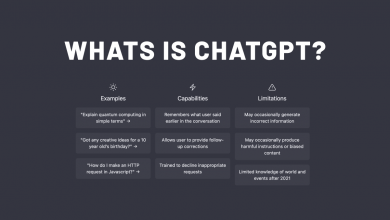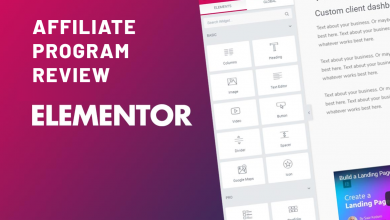
Writing an article that boosts traffic to your website requires a combination of research, organization, and optimization. Firstly, Choose a relevant and timely topic, Research and curate high-quality content, Write a compelling introduction, Organize the content in a logical and easy-to-read manner, Add your own commentary, include calls to action and Optimize for SEO. Use keywords, meta tags, header tags, internal linking, alt tags and structured data to help search engines understand the content of your article. Use calls to action such as links or buttons to encourage readers to visit your website, share your article on social media or sign up for your newsletter. It’s important to test different CTAs and track the results to see which ones are most effective. Additionally, continually monitor industry trends and audience feedback to identify new topics that are relevant and timely.Here are a few tips to help you write a successful roundup article:
- Choose a relevant and timely topic: The topic of your roundup article should be relevant to your audience and something that they are interested in. It should also be timely, so that it stays relevant and generates interest.
- Research and curate high-quality content: Research and curate a list of high-quality articles, blog posts, or other content that are related to your topic. Make sure to include a diverse range of perspectives and opinions.
- Write a compelling introduction: The introduction of your roundup article should be attention-grabbing and provide an overview of the topic. It should also include a hook that will entice readers to continue reading.
- Organize the content: Organize the curated content in a logical and easy-to-read manner. Use headings, subheadings, and bullet points to make it easy for readers to navigate and find the information they are looking for.
- Add your own commentary: Add your own commentary and analysis to the curated content. This will provide added value to your readers and help to establish you as an authority on the topic.
- Include calls to action: Include calls to action throughout your article, such as links to your own content or asking readers to share the article on social media. This will help to increase traffic to your website.
- Optimize for SEO: Optimize your roundup article for SEO by including relevant keywords and meta tags. This will help to increase visibility and drive traffic to your website.
1 . How to choose Choose a relevant and timely topic?
Choosing a relevant and timely topic for your roundup article is crucial for its success. Here are a few ways to help you choose a relevant and timely topic:

- Look at industry trends: Stay up-to-date on the latest industry trends and news by regularly reading industry publications and blogs. This will help you identify topics that are currently relevant and of interest to your audience.
- Monitor social media: Use social media listening tools to monitor conversations and identify popular topics in your industry. This will help you stay on top of current events and identify trending topics.
- Check search engine data: Use keyword research tools to identify the most searched-for terms in your industry. This will help you understand what topics are currently popular and relevant to your audience.
- Ask your audience: Ask your audience what topics they are interested in and what problems they need help solving. This will give you valuable insights into what topics are relevant and timely for them.
- Look at past performance: Analyze the performance of your previous articles, blog posts, and social media posts to identify what topics have been popular and successful in the past. This will help you identify topics that have proven to be relevant and timely for your audience.
It’s worth noting that choosing a relevant and timely topic is an ongoing process, and you should continually monitor industry trends, social media conversations, and audience feedback to identify new topics that are relevant and timely.
2. How to research and curate high-quality content?
Researching and curating high-quality content for your roundup article is an important step in ensuring its success. Here are a few ways to help you research and curate high-quality content:
- Use search engines: Use search engines such as Google and Bing to find relevant articles, blog posts, and other content. Use keywords related to your topic and add filters such as “recent” or “top results” to find the most recent and relevant content.
- Use social media: Use social media platforms such as Twitter, LinkedIn and Facebook to find relevant content. Follow industry leaders and influencers in your field, and keep an eye on the content they share.
- Use Content Discovery Platforms: Use content discovery platforms like Buzzsumo, Ahrefs, or Inkybee to find high-quality content on your topic. These platforms will help you find the most popular and shared content in your industry.
- Check industry publications: Check industry-specific publications such as trade journals, magazines, and newspapers to find relevant content. These publications often feature expert insights and in-depth analysis on industry-specific topics.
- Check other websites: Check other websites in your industry to find relevant content. This can include competitor websites, industry association websites, and other industry-specific resources.
It’s worth noting that when curating content, make sure to choose a diverse range of perspectives, opinions and content types.
3. How to write a compelling introduction?
Writing a compelling introduction in your roundup article is important to grab the attention of your readers and entice them to read on. Here are a few tips to help you write a compelling introduction:
- Start with a hook: Begin your introduction with a hook that will grab the attention of your readers. This could be a surprising fact, an interesting question, or a personal anecdote that relates to the topic.
- Provide context: Provide some background information on the topic to give your readers context. This will help them understand the significance of the topic and why it is relevant to them.
- Preview the main points: Preview the main points of the article, so that readers know what to expect. This will give them a clear understanding of the structure and organization of the article.
- Use a strong thesis statement: Use a strong thesis statement to summarize the main point or argument of your article. This will help your readers understand the main takeaways they will gain from reading your article.
- Keep it short and sweet: Keep your introduction short and sweet. You want to grab the attention of your readers and entice them to read on, but you don’t want to give away too much information too soon.
- Use a tone that matches your audience: Use a tone that matches your audience and the subject matter. If your article is more formal, ensure that the introduction is also formal.
It’s worth noting that the introduction is the first impression the reader will have of your article, so make sure it is well written, engaging and leaves a lasting impression.
4. How to Organize the content in the article?
Organizing the content in your roundup article is important to make it easy for readers to navigate and find the information they are looking for. Here are a few tips to help you organize the content in your article:
- Use headings and subheadings: Use headings and subheadings to organize the content into sections. This will make it easy for readers to scan the article and find the information they are looking for.
- Use bullet points: Use bullet points to organize lists of information and make them easy to read. This will help to break up large blocks of text and make the article more visually appealing.
- Use images and graphics: Use images and graphics to supplement the text and add visual interest to the article. Be sure to include captions to explain the context of the images and graphics.
- Use hyperlinks: Use hyperlinks to link to relevant sources, such as the original articles or blog posts you’ve curated. This will provide additional information for readers who want to learn more about a specific topic.
- Group similar information together: Group similar information together, such as different articles on the same topic. This will make it easy for readers to find the information they are looking for and compare different perspectives.
- Use a logical flow: Use a logical flow to organize the content. For example, start with an overview of the topic and then move on to specific examples and insights.
5. Add your own commentary
Adding your own commentary to your roundup article is an important step in providing added value to your readers and helping to establish you as an authority on the topic. Here are a few tips to help you add your own commentary to your article:
- Offer your own insights: Offer your own insights and analysis on the curated content. This will provide additional perspective and depth to the topic and help to establish you as an authority on the subject.
- Add context: Add context to the curated content by explaining how it relates to the topic and the larger industry. This will help readers understand the significance of the content and how it applies to them.
- Provide additional information: Provide additional information that is not covered in the curated content. This will give readers a more well-rounded understanding of the topic and help them to learn more about it.
- Include your own experiences: Share your own experiences and examples related to the topic. This will help to personalize the article and make it more relatable to the readers.
- Use examples and data: Use examples and data to support your commentary and make it more credible. This will give readers a better understanding of the topic and help them to see the bigger picture.
- Use a consistent tone: Use a consistent tone throughout your commentary and make sure it aligns with the tone of the curated content. This will help to create a cohesive and easy-to-read article.
It’s worth noting that when adding your own commentary, it’s important to be objective and unbiased, and always back up your points with data or examples.
6 . Include Calls To Action
A call to action (CTA) in an article is a phrase or button that prompts the reader to take a specific action, such as visiting a website, signing up for a newsletter, or making a purchase. CTAs are used in marketing and advertising to increase conversions and drive results. In the context of an article, a call to action can be used to:

- Encourage readers to visit your website: This could be to learn more about your business, read more of your articles, or sign up for a newsletter.
- Promote a product or service: This could be a link to a product page or a form to request more information about a service you offer.
- Share the article on social media: This could be a button or a link to share the article on social media platforms.
- Sign up for a free trial or demo: This could be a button or a link to sign up for a free trial or demo of a product or service.
- Download a free resource: This could be a link to download an e-book, whitepaper or other resource related to the article topic.
- Register for a webinar or event: This could be a button or a link to register for a webinar or event related to the article topic
It’s worth noting that CTAs should be placed prominently in the article, such as at the end of the article, and they should be clear, concise and direct, and also it’s important to test different CTAs and track the results to see which ones are most effective.
7. Optimize for SEO
Optimizing your roundup article for SEO is important to increase visibility and drive traffic to your website. Here are a few tips to help you optimize your article for SEO:

- Use keywords: Use keywords related to your topic throughout your article. This will help search engines understand the content of your article and increase its visibility in search results.
- Use meta tags: Use meta tags such as title tags and meta descriptions to provide information about your article to search engines. These tags should include your primary keywords and a brief summary of the article.
- Use header tags: Use header tags such as H1, H2, and H3 to organize the content of your article and make it easy for search engines to understand the structure of your article.
- Use internal linking: Use internal linking to link to other relevant articles on your website. This will help search engines understand the structure of your website and increase the visibility of your other articles.
- Use alt tags: Use alt tags to describe images and graphics used in your article. This will help search engines understand the context of the images and improve the visibility of your article.
- Optimize images and videos: Optimize images and videos by compressing them and using descriptive file names. This will help to improve the loading time of your article and increase its visibility in search results.
- Use structured data: Use structured data, like schema.org, to help search engines understand the content of your article and display it in a more user-friendly way in the search results.
It’s worth noting that SEO is a continuous process and you should monitor your article’s performance and make changes accordingly, also it’s important to follow the search engine guidelines and best practices.





